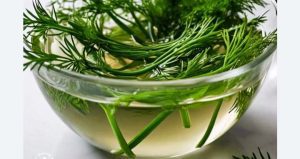
Radish leaves, also called radish greens, are often overlooked, but they offer a plethora of health benefits.
In this comprehensive article, we will dive deep into the 10 powerful health benefits of radish leaf, backed by scientific studies and research. We will also discuss any potential side effects of consuming radish leaves and provide practical tips on how to incorporate them into your diet to maximize their benefits.
1. Rich in Nutrients
Radish leaves are packed with essential nutrients that contribute to overall health. They are an excellent source of vitamins A, C, and K, as well as folate, calcium, and iron. Vitamin A supports healthy vision and immune function, while vitamin C acts as an antioxidant and boosts collagen production. Vitamin K is essential for blood clotting and bone health, while folate is vital for cell growth and development. Calcium and iron are crucial for strong bones and oxygen transport in the body, respectively.
To optimize the nutrient intake from radish leaves, consume them fresh in salads, stir-fries, or smoothies. This will ensure you receive the maximum benefits from their nutrient-rich profile.
2. Benefits Digestive Health
The high fiber content in radish leaves promotes healthy digestion. Fiber adds bulk to the stool, preventing constipation and promoting regular bowel movements. It also acts as a prebiotic, providing nourishment for beneficial gut bacteria. A healthy gut microbiome is essential for proper digestion and overall well-being.
To optimize the digestive benefits of radish leaves, incorporate them into your meals by sautéing or steaming them as a side dish. You can also add them to soups or incorporate them into omelets for a nutritious boost.
More On Radishes:
- Benefits of Spanish Black Radish
- Health Benefits of Black Radish: Nutrition, Side Effects, and More
- Health Benefits of White Radish: Nutrition, Side Effects, and More
- Radish Juice: Benefits, Nutrition, Side Effects
- Benefits of Radish Sprouts
- Benefits of Eating Raw Radishes and Side Effects
- Benefits of Daikon Radish
3. Boosts Immune System
Radish leaves are a powerhouse of immune-boosting nutrients. Vitamin C, present in ample amounts in radish leaves, plays a crucial role in supporting immune function. It helps stimulate the production of white blood cells, which are vital for fighting off infections and diseases. Additionally, the antioxidants present in radish leaves help protect the body from harmful free radicals, strengthening the immune system.
To optimize the immune-boosting benefits, include radish leaves in your diet regularly. You can add them to salads, sandwiches, or blend them into green smoothies for a refreshing and nutritious immune-boosting drink.
4. Supports Bone Health
Radish leaves are a rich source of vitamin K, which is essential for bone health. Vitamin K plays a crucial role in calcium metabolism and helps maintain bone density. It works synergistically with calcium to support strong and healthy bones.
To maximize the bone-supporting benefits of radish leaves, incorporate them into your meals by adding them to soups, stews, or sautéing them as a side dish. Pair them with other calcium-rich foods, such as dairy products or fortified plant-based alternatives, for optimal bone health.
5. Skin Benefits
The combination of vitamins A and C in radish leaves contributes to healthy skin. Vitamin A helps maintain skin health by promoting cell turnover and reducing the risk of skin conditions such as acne. Vitamin C, on the other hand, acts as an antioxidant and supports collagen production, giving the skin a youthful and radiant appearance.
To optimize the skin benefits, include radish leaves in your diet by adding them to salads or incorporating them into green smoothies. You can also apply crushed radish leaves topically as a face mask for a refreshing and nourishing skincare treatment.

6. Supports Weight Management
If you’re looking to manage your weight, radish leaves can be a valuable addition to your diet. They are low in calories and high in fiber, which promotes satiety and helps control appetite. The fiber content also aids in digestion and regulates blood sugar levels, contributing to weight management.
To optimize the weight management benefits, replace high-calorie, low-nutrient foods with radish leaves in your meals. You can sauté them with other vegetables, add them to salads, or use them as a nutrient-rich base for wraps or sandwiches.
7. Aids in Detoxification
Radish leaves contain compounds that support the body’s natural detoxification processes. They are rich in antioxidants, which help neutralize harmful toxins and protect against oxidative stress. Additionally, radish leaves have diuretic properties, promoting increased urine production and aiding in the elimination of waste products from the body.
To optimize the detoxification benefits, incorporate radish leaves into your diet by adding them to detoxifying smoothies or juicing them for a refreshing beverage. You can also enjoy them in salads or use them as a garnish for soups and dishes.
8. Supports Eye Health
The high vitamin A content in radish leaves contributes to maintaining healthy eyesight. Vitamin A is essential for the proper functioning of the retina and plays a crucial role in vision. Regular consumption of radish leaves can help protect against age-related macular degeneration and other eye-related issues.
To optimize the eye health benefits, consume radish leaves as part of a balanced diet that includes other vitamin A-rich foods like carrots and sweet potatoes. You can add them to salads or incorporate them into soups and stews for a nutritious boost.
9. Anti-Inflammatory Properties
Radish leaves contain anti-inflammatory compounds that can help reduce inflammation in the body. Chronic inflammation is linked to various health conditions, including heart disease, diabetes, and arthritis. Including radish leaves in your diet can help combat inflammation and promote overall well-being.
To optimize the anti-inflammatory properties, incorporate radish leaves into your meals by using them as a base for salads, sautéing them with other vegetables, or adding them to wraps and sandwiches.
10. Promotes Heart Health
The combination of nutrients present in radish leaves, such as fiber, potassium, and antioxidants, contributes to heart health. The fiber content helps maintain healthy cholesterol levels, while potassium supports proper blood pressure regulation. The antioxidants present in radish leaves help protect against oxidative stress and reduce the risk of cardiovascular diseases.
To optimize the heart health benefits, include radish leaves in your diet by adding them to salads, using them as a topping for pizzas or pasta dishes, or incorporating them into vegetable smoothies.
Side Effects of Consuming Radish Leaves

While radish leaves offer numerous health benefits, it’s essential to be aware of potential side effects.
Some individuals may experience digestive discomfort, such as gas or bloating, when consuming radish leaves raw or in large quantities.
If you have a history of kidney stones, it’s advisable to moderate your intake of radish leaves due to their oxalate content, which may contribute to stone formation.
If you have any concerns or pre-existing health conditions, it’s always best to consult with a healthcare professional before making significant dietary changes.
Incorporating Radish Leaves into Your Diet
Now that we’ve explored the powerful health benefits of radish leaves, let’s discuss some practical tips on how to incorporate them into your diet and reap it many health benefits:
- Add radish leaves to your salads for a nutrient-rich boost.
- Sauté radish leaves with garlic and olive oil as a delicious side dish.
- Blend radish leaves into green smoothies for a refreshing and nutritious drink.
- Use radish leaves as a base for wraps or sandwiches instead of traditional lettuce.
- Incorporate radish leaves into soups or stews for added flavor and nutrients.
- Juice radish leaves along with other vegetables for a detoxifying beverage.
Remember to wash radish leaves thoroughly before consuming them to remove any dirt or pesticides. Store them in the refrigerator in a sealed container to maintain freshness.
Read This:
- Benefits of Radish for Weight Loss
- Radish Root: Benefits, Nutrition, Uses, and Side Effects
- Daikon Radish Juice: Benefits, Nutrition, Side Effects
- Benefits of Radish Seeds
- Health Benefits of Radish Soup and Recipes
- Benefits of Eating Radish at Night
- Benefits of Eating Radish on an Empty Stomach
- Benefits of Radish for Hair
- Benefits of Red Radish
In conclusion, radish leaves offer a wide range of powerful health benefits, from supporting digestion and immune function to promoting healthy skin and heart health. By incorporating radish leaves into your diet in various ways, you can optimize their nutritional value and enjoy their numerous advantages. However, be mindful of potential side effects and consult with a healthcare professional if you have any concerns. Embrace the goodness of radish leaves and embark on a journey towards a healthier lifestyle.
Related Posts
Citations:
[1] https://www.healthline.com/nutrition/are-radish-greens-edible
[2] https://www.webmd.com/diet/health-benefits-radish
[3] https://www.thesophisticatedcaveman.com/how-to-eat-radish-greens/
[4] https://www.tarladalal.com/article-9-benefits-of-radish-leaves-mooli-ke-patte-362
[5] https://www.lybrate.com/topic/radish-leaves-benefits







































